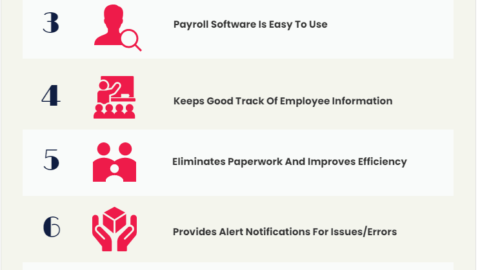4 Different Ways to Create Digital Art – and 2 Key Trends
Digital art is everywhere we look, and if you want to be an active participant in this movement rather than just an observer, there are lots of ways to go about it. Here are a few options to get you started, as well as a couple of crucial trends that are useful to know about as you pursue your artistic ambitions. So, how to create your digital art?
Table of Contents
How do I make my own digital art?
- Choose your digital art tools: Select the software or application that suits your needs and artistic style, such as Adobe Photoshop or Procreate, which offer a wide range of tools and features.
- Get familiar with your chosen software: Take the time to learn the basics of the software, including its interface, tools, and functions. Watch tutorials or read guides to understand how to navigate and use the software effectively.
- Gather inspiration and plan your artwork: Explore various sources of inspiration, such as other artists, nature, or photography, and sketch out your ideas. Consider the composition, color scheme, and overall concept of your artwork.
- Start sketching and outlining: Then, begin by sketching your ideas using digital brushes or pencils. Utilize layers to separate different elements and make it easier to edit and refine as you progress.
- Add color and details: Once you have a solid sketch, start adding colors and details to bring your artwork to life. Experiment with different brushes, gradients, and blending modes to create depth, texture, and visual interest.
- Experiment and refine: Don’t be afraid to try different techniques and effects to enhance your artwork. Play with adjustments, shadows, highlights, and other details to refine your piece and achieve the desired visual impact.
- Save and export: When your artwork is complete, save it in a high-quality format, such as PNG or TIFF, to preserve its quality. Consider exporting it in different file formats depending on your intended use, such as JPEG for online sharing or PDF for print.
What program do I need to create digital art?
To create digital art, you’ll need specialized software designed for digital art creation. Popular options include Adobe Photoshop, Procreate, Adobe Illustrator, Corel Painter, Clip Studio Paint, Autodesk SketchBook, and GIMP. These programs offer a range of tools, brushes, and features for drawing, painting, and manipulating digital artwork.
Vector Art
If you want to create clean, scalable images, give vector art a try. This technique uses mathematical formulas to generate lines and shapes. As such, it ensures your digital artwork remains crisp and clear, even when resized.
Vector art is particularly well suited to logo designs or any kind of graphic work where precision matters, so give it a go if this is the type of project you want to tackle.
Well-liked vector art solutions such as Amadine and Inkscape make it accessible to amateurs, so there’s no excuse not to dive in.
AI-Generated Art
It might have sounded unlikely just a few years ago, but advances in technology mean you can use AI to generate art that’s truly compelling and creatively fulfilling as well.
Artificial intelligence works by interpreting input data and making something entirely new from it. It’s truly an exciting frontier for digital artists looking to experiment.
While some might sell it as straightforward to use, AI is like any tool in that you need to learn how to utilize it effectively to get good results. The more effort you put in, the better the results that will come out the other side.
Pixel Art

Injecting an old-school look into new visual concepts is possible thanks to the varied and innovative pixel art scene. It brings vintage vibes back, pixel by pixel, and is shaping gaming as well as being influential further afield.
Created with software like Aseprite, your artistic vision can be expressed by miniature squares of color, and there’s a lot you can do with the chunky, blocky goodness that results.
The charm of this technique lies in its simplicity and nostalgic value, although some truly impressive creations have been made using it, so don’t see it as a limiting factor or a more simplistic or primitive type of digital art, because that’s not the case at all.
Digital Painting
If you’re captivated by the classic feel of paints on canvas but want a 21st-century touch, digital painting is your best bet.
Tools like Procreate take inspiration from traditional mediums to mimic strokes, shading, and blending without leaving any mess behind.
You get the tactile joy of old-school painting with a sweet digital spin. It’s perfect for creating everything from concept art to complete masterpieces. And of course it benefits from users having existing artistic skills, while still being accessible enough to bring amateurs into the fold as well.
Monetization Trends Worth Noting for Digital Art
Once you’ve got the hang of creating digital art, the next step is to monetize your efforts. There are lots of trends at play here, including:
- Non-Fungible Tokens (NFTs): Buying an NFT means purchasing ownership of unique pieces of art, verified on the blockchain. It has shaken up how we define ‘ownership’ in digital art. While the initial hype around NFTs may have subsided, there’s still a very legitimate use case for this technology in terms of protecting and monetizing the work of creators worldwide.
- Crowdfunding Platforms: Sites like Patreon or Kickstarter let fans directly support their favorite artists through subscriptions or donations. Patreon is particularly interesting as it provides a steady income to artists and lets them remain relatively independent, rather than forcing them to adhere to the demands of third party clients.
- Licensing: Consider licensing your artwork for commercial purposes, as logos, branding assets or even merchandise can be decked out in the projects you pour your creative efforts into.
- Print-On-Demand Services: Numerous companies will print your designs onto products. You upload and collect royalties with each sale, leaving you with more creative control over the outcome than if you rely on simple licensing alone.
Each option has its pros and cons. Do some research before diving into any one trend, and look at what other creators are up to in terms of monetization.
The Role of Sustainability in the Digital Space
Green is truly becoming everyone’s favorite color, even in digital art. More and more creators are focusing on sustainable themes to raise awareness about environmental issues.
From designing eco-friendly virtual spaces to promoting upcycling through art pieces, creativity meets responsibility here. There’s a rise in artwork curated from e-waste too, fashioning beauty from brokenness.
Moreover, many artists are consciously choosing greener platforms for showcasing their work. Something as simple as sticking to online galleries over physical ones helps save space and energy.
Final Thoughts on Digital Art
Digital art offers a combination of endless creativity, novelty and forward momentum. Whether it’s exploring new ways to create or embodying the changing trends, people hoping to break into this scene need to be innovative.

Business Developmeny Manager at PAS InfoCom Technologies Ltd. Experienced in project management with a demonstrated history of working in the information technology and services industry.











